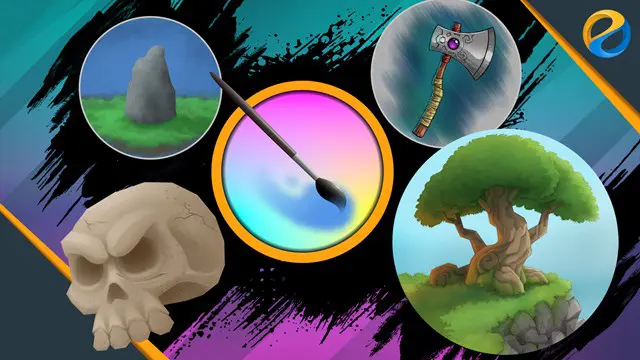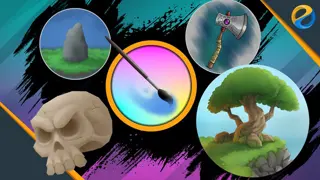
Digital painting with Krita 5.0 for beginners
Learn to use Krita’s powerful features for speed and non-destructive illustration
Expose Academy
Summary
- Reed courses certificate of completion - Free
Add to basket or enquire
Overview
Want to learn how to create professional quality illustrations with open-source software? This course is all you need. You will learn Krita from the very basics until you can create beautiful digital artworks using a non-destructive workflow.
In this course we will discuss:
- Important computer graphics concepts related to the process of creating digital artworks.
- Basic features of Krita such as the UI, canvas navigation, and so on.
- Basic drawing, inking, dan coloring techniques using a style commonly found in superhero comics.
- Learn more sophisticated techniques to speed up the creation process such as using selection, layer composition, blending modes, and so on.
- Learn shading concepts and techniques for digital painting.
- Create an illustration using a non-destructive workflow.
Curriculum
Course media
Description
"Krita" is a graphic application comparable to Photoshop. But unlike Photoshop, Krita is free and open-source software. So, you don't need to pay anything to download and use it. Another thing that makes Krita different from Photoshop, is that Krita is more focused on digital painting. That is why in Krita, you can find many features related to digital painting that do not exist in Photoshop. If you need software for drawing or creating illustrations, then Krita will make you feel right at home.
If you have never used Krita before or even never used any graphic software such as Photoshop, Gimp, and so on. You don't need to worry. Because we will start from the very basics. I have carefully crafted the curriculum for convenience and speed. In sha Allah, you can master Krita quickly but through an easy and enjoyable learning experience.
What you will learn
There are a lot of things that you are going to learn in this course. Just for a quick preview, this online course consists of 8 chapters, outside the introduction chapter.
In chapter zero or the introduction chapter, you will learn how to set up the drawing tablet. And also various tips to make Krita perform optimally.
Then in the first chapter, you will learn the theories and concepts around computer graphics which will be relevant later in the digital painting process. You will learn the difference between raster and vector graphics. Then learn various types of color models that exist in the world, such as RGB and HSV. Then learn the basic concepts behind "bits per channel", "high range images", "hexadecimal" color codes, and so on.
In the second chapter, you will start learning the basic features of Krita. From how to work with documents. Understanding the UI and how to tweak it. Then learn the different methods of canvas navigation.
In the next chapter, you will learn how to use the "freehand brush tool" and also how to work with color in Krita. From choosing and managing "brush presets". How to use the "pop-up palette". Understanding various parameters related to brush, such as "size", "opacity", "flow", "eraser mode", etc. Then learn how to use the "advanced color selector", "color sampling" technique, how to use the "color palette", and so on.
In the fourth chapter, we are going to discuss various tools that are based on the brush engine. We will learn tools like the "line tool", "rectangle tool", "Ellipse tool", "polygon tool", "polyline tool", and so on.
In the fifth chapter, you will learn about the selection and layer composition. We will start by discussing the basic selection techniques. Then move on to custom-shaped selection techniques. Then discuss the background layer. Learn the different types of layers available in Krita. Understand various properties related to layers. Learn to make complex compositions using "group layer", "alpha inheritance", "blending mode", etc. In this chapter, we will draw a simple landscape illustration using various tools and features we discussed earlier.
In chapter six, you will learn the basic techniques of drawing and coloring in Krita. To practice the techniques, you will create an ax weapon illustration from start to finish. You will start by drawing the sketch. Then learn various techniques for drawing smooth "line arts". Then learn the various types of "assistant tools" available in Krita. You will also learn different approaches of adding base colors to a drawing. One of the techniques is to use the "colorize mask" feature. After that, you will learn how to add shading and highlight colors with a style you often see in superhero comics.
In the seventh chapter, you will learn the basics of creating digital paintings with smoother shading colors. You will start by preparing all the brush presets. Then learn to create custom shortcuts for faster workflow. Then we will discuss the basic concepts of shading. Learn how to form any shape we want by manipulating the color gradation on the canvas. Then we move on to learn different shading techniques. After that, we will put into practice the techniques that we learned by making a skull illustration. From drawing the sketch, adding the base color, applying "shading" and "highlight" colors, and finally adding details and textures to the drawing.
In the last chapter, we are going to discuss the workflow for creating a non-destructive illustration. We are going to create a tree on the cliff illustration from start to finish using all the techniques we learned before. The benefit of having a non-destructive composition is that it will be easier if we need to make some changes or revisions. In some cases, this kind of workflow becomes very crucial. Such as when you need to create a lot of variations from a single artwork as quickly as possible.
So, join the course now! And start creating beautiful artworks using Krita.
Who is this course for?
- Anyone who wants to learn digital illustration from scratch.
- Anyone who wants to learn Krita from the very basic.
- Photoshop or Corel-Painter users who want to migrate to an open-source alternative.
Requirements
- Designed for complete beginners. No previous experience needed!
- Able to use basic computer operations such as copying file, extracting zip file, installing software, etc.
- It is strongly recommended that you have a pressure-sensitive drawing tablet such as: Wacom, XP-Pen, Huion, etc.
Questions and answers
Currently there are no Q&As for this course. Be the first to ask a question.
Certificates
Reed courses certificate of completion
Digital certificate - Included
Will be downloadable when all lectures have been completed
Reviews
Legal information
This course is advertised on reed.co.uk by the Course Provider, whose terms and conditions apply. Purchases are made directly from the Course Provider, and as such, content and materials are supplied by the Course Provider directly. Reed is acting as agent and not reseller in relation to this course. Reed's only responsibility is to facilitate your payment for the course. It is your responsibility to review and agree to the Course Provider's terms and conditions and satisfy yourself as to the suitability of the course you intend to purchase. Reed will not have any responsibility for the content of the course and/or associated materials.


